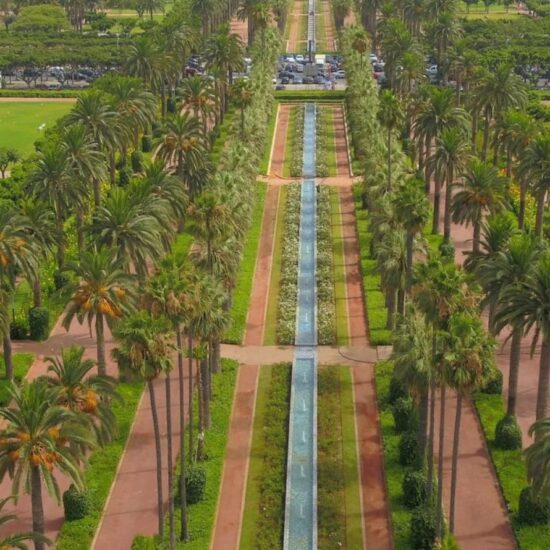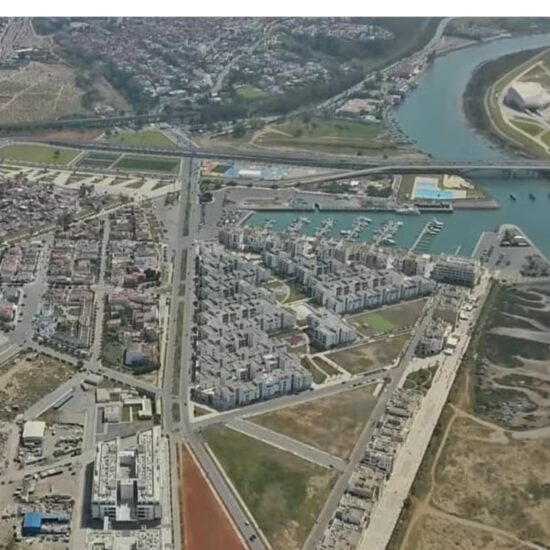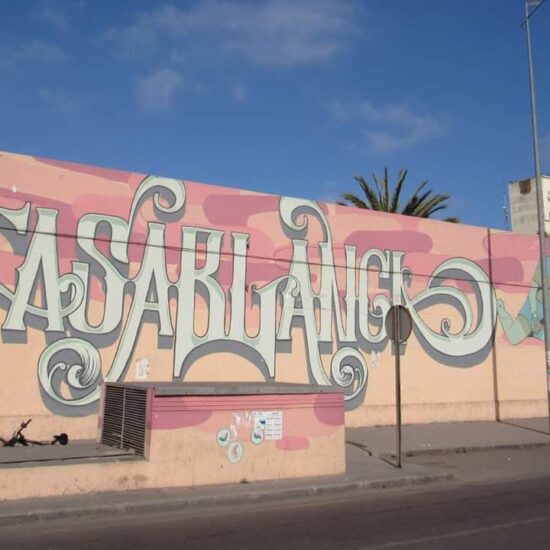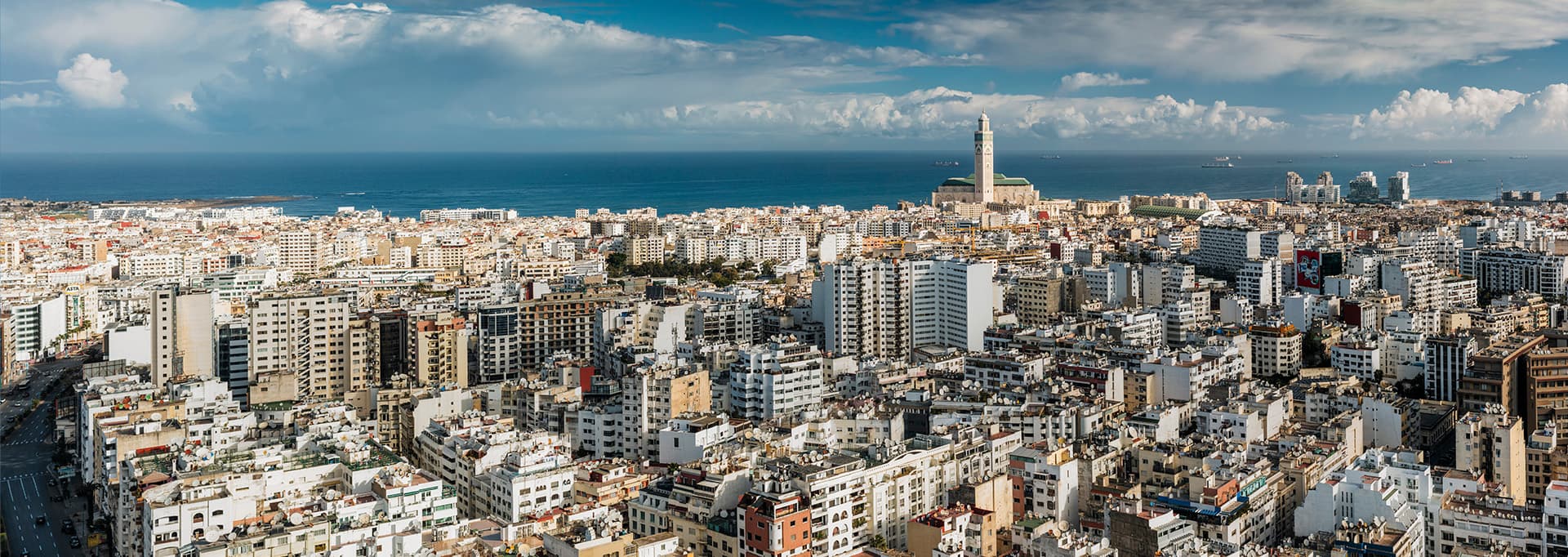The Old Medina of Casablanca
Let's go together to discover theOld Medina of Casablanca.
If Casablanca is the modern city par excellence, we often forget that its site was occupied by man since prehistoric times. However, it was not until the 10th century that a small city developed: it was then indicated on maps under the names of Anfa, Anafa, Anafé, Anifé or Anafi, variations of a Berber word meaning "small hill". The city quickly became a small flourishing port, which exports wheat to Spain and Portugal. In a few decades it became the ccapital of a powerful Berber principality, that of the Zenetes Berghwatas. They federated tribes from Tamesna and Doukkala, from Oum Rbia (Azemmour) to Bouregreg (Salé). Followers of a Kharijite Islam, egalitarian and uncompromising, they stood up to the different dynasties ruling the country until 1068. That year, the Almoravid conqueror Youssef Ben Tachfine, who was then leading the political and religious unification of Morocco, besieged and destroyed the city of Anfa.
Then followed the first eclipse in the history of Casablanca. The Berghwatas were decimated or forced to embrace orthodox Islam and for three centuries, the city remained in ruins. From the 15th century, the site was occupied by a outpost of the Corsair Republic of Salé and the pirates of this modest port were not afraid to attack the Spanish and Portuguese merchant ships that sailed along the coast. To avenge the incessant damage caused by the inhabitants of Anfa, the Portuguese led a punitive expedition in 1468. The Infante Don Ferdinand of Portugal then took command of an armada of 50 ships and powerful artillery and had the city razed. Anfa, the old medina of Casablanca, was once again left in ruins.
The city suffered another attack in 1515 and, sixty years later, from 1575, the Portuguese occupied Anfa again and built a prison there between the marabouts of Sidi Bousmara and Sidi Belyout. It is from this period that the first visual representation of the city in history dates. We can admire this engraving from 1572 at the National Library of the Kingdom, in Rabat: it shows us a small fortified but ghostly medina, with monuments that bear the traces of the ravages. In 1755, the Lisbon earthquake forced the Portuguese to withdraw.
The city only came back to life under the reign of Alaouite Sultan Sidi Mohammed Ben Abdellah (1747-1789). He raised the ramparts, equipped Anfa with a system of fortifications and artillery (the Sqala), a mosque (Jemaa Kebir), a madrasa and a hammam. The Medina of Casablanca then occupies an area of approximately 50 hectares and takes the form of an irregular polygon approximately 100 meters long and 500 meters wide. It is surrounded by a fortified enclosure flanked by watchtowers (the borjs) and pierced by gates. It was under the reign of Sultan Sidi Mohammed Ben Abdellah that the city became "Dar Al Beida" or "Casablanca".
The visit will take us to explore the southeastern part of the Medina, that is to say the Makhzen district where all the valuable buildings among the oldest in Casablanca were located: Jemaa Kebir and Jemaa Ould El Hamra, the mausoleums of Sidi Allal Al Kairouani, Lalla Taja, Sidi Bousmara and Sidi Belyout but also the governor's residence, the customs office and the foreign consulates. This district, registered as National Heritage by the Ministry of Culture in 2013, presents a very great architectural diversity: religious architecture, funerary architecture, military architecture, domestic architecture, administrative architecture. It also embodies the tolerance of cohabitation between inhabitants of different origins and religions. Finally, it stands out from the ancient cities with its streets and buildings that resemble coastal cities more than the imperial medinas of the interior of the country. Let's discover it together with Blog, !
-
InclusThe Old Medina of Casablanca
-
Pas inclusNatureMovie theaterIndustryUrban planningHistoryArchitectureSpirituality / ReligionSportHobbies
Departure
- Introduction to the Old Medina of Casablanca
- The Sqala of Casablanca
Circuit
- The Ramparts of the Old Medina of Casablanca
- The Zaouia Derkaouia
- The Mausoleum of Sidi Allal Al Kairouani
- “Arsat Zerktouni”, the Zerktouni Garden
- Rick's Cafe
- The Foundouk Lebbadi of Rue de Larache and the House of Touhami Ennadre
- The Old Church of San Buenaventura
- The Ettedgui Synagogue
- Dar Benjelloun & Zaouia Kadiria Boutchichia
- Fatima El Fihria School
- Jemaa Ould Hamra Mosque
- The Union House (former General Residence) and Rue de la Marine
- The Weisgerber House
- The Old School of the Sons of Notables
- Place de Belgique & the Old Spanish Post Offices
- The Former German Consulate and the Place de Belgique
- The Mausoleum of Lalla Taja
- The Place du Commerce
- The Golden Rooster
- The House of Manuel Alvarez and Derb Sbaniya
- La Zaouia Al Harrakia Derkaouia
- The House of Rabbi Haim Pinto
- The Central Square
- The Old State Bank of Morocco and the Hôtel des Amis
- The Candide Hotel
- The Old Hotel de France
- The Moroccan Lookout and Imperial Cinema
- The Former Spanish Consulate
- The Former Danish Consulate
- The Old Cabaret Le Petit Riche
- The Central Hotel and Ahmed El Bidaoui Square
- The Youth Hostel
- Bab Marsa, the Navy Gate
- The Portuguese House
- The Old Customs House
- The Tuscan Palace
- Dar Touzani Mendili
- Dar Zemmouri
- Dar Benjelloun & Rue des Cols Bleus
- The Mausoleum of Sidi Bousmara
- The Milk Drop
- Jemaa Kebir
- Dar Makhzen and Bab Erraha
- The Old French Post Office & the Old Rue du Commandant Provost
Arrival
- Zaouia Hamdouchia, the House of the Martyr
Donnez votre avis
DETAILS
Duration : 3 hours
Distance : 1 km
Shift : on foot
Language : in French, in English, in Arabic





![[:fr]CitizOn CasaPocket - Visites guidées insolites à Casablanca Maroc[:]](https://citiz-on.com/wp-content/uploads/2016/11/1-550x550.jpg)
![[:fr]CitizOn CasaPocket - Visites guidées insolites à Casablanca Maroc[:]](https://citiz-on.com/wp-content/uploads/2016/11/Capture-décran-2023-04-29-à-08.58.22-550x550.png)
![[:fr]CitizOn CasaPocket - Visites guidées insolites à Casablanca Maroc[:]](https://citiz-on.com/wp-content/uploads/2016/11/1-copie-550x550.jpg)
![[:fr]CitizOn CasaPocket - Visites guidées insolites à Casablanca Maroc[:]](https://citiz-on.com/wp-content/uploads/2016/11/1-scaled.jpg)
![[:fr]CitizOn CasaPocket - Visites guidées insolites à Casablanca Maroc[:]](https://citiz-on.com/wp-content/uploads/2016/11/Capture-décran-2023-04-29-à-08.58.22.png)
![[:fr]CitizOn CasaPocket - Visites guidées insolites à Casablanca Maroc[:]](https://citiz-on.com/wp-content/uploads/2016/11/1-copie-scaled.jpg)